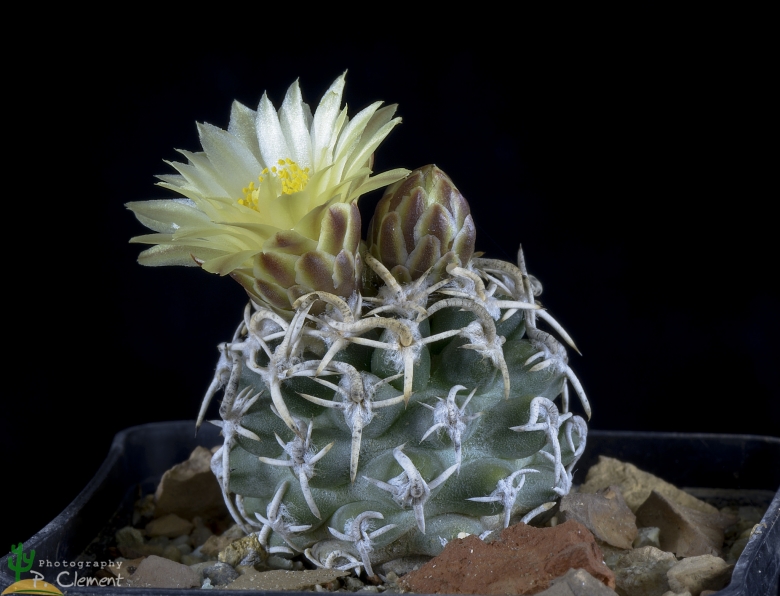
Pediocactus peeblesianus f. maius Photo by: Peiffer Clement
Origin and Habitat: North of Prescott to Cataract Canyon, Arizona.
Type locality: Little Colorado River Gorge, Arizona.
Altitude: Around 1450 metres above sea level.
Synonyms:
See all synonyms of Pediocactus peeblesianus
Description: Pediocactus peeblesianusSN|11412]]SN|11412]] f. maius, is a controversial geographical or morphological forms of Pediocactus peeblesianusSN|11412]]SN|11412]] that should actually be regarded as non-existent (nomen nudum) because is based on a juvenile form of another taxon (Echinocereus fendleriSN|7149]]SN|7149]]). It should have 5-6 corcky upper and lateral spines of varying length without central spines, however 1 (or more) upward pointing central spine are commonly present in the "maius" plants found in cultivation. Moreover the plants found in habitat in the area of the P. peeblesianus f. maius (north of Prescott to the Cataract Canyon) does not appear to differ from typical P. peeblesianus in any significant respect and should be attributed to the standard P. peeblesianus. (In any case, according to its habit, and its range of distribution (Grand Canyon), it is clearly different from Pediocactus peeblesianusSN|11412]]SN|11412]] subs. fickeisenii). Further research is needed.
Habit: It is a very small, geophyte cactus that shrinks into the gravelly soils after flowering and fruiting. It is almost always solitary, although it may occasionally branch, possibly as the result of injury.
Stem: Globose, depressed globose or egg-shaped, greyish green 2,2-7,5 cm tall, 2-5,5 cm in diameter, often nearly buried with only the summit visible above ground. Stems have nipple tipped tubercles that form a spiral pattern around the plant.
Areoles: Circular and hairy.
Spines: Corky/spongy, and flexible but have hard tips and not obscuring the stem. Ashy white to pale grey.
Central spine: absent or 1 to 4 pointing upwards up to 2,5 cm long
Radial spines: Up to 7 per areole, 2-10 mm long, recurving.
Flowers: Near the stem's apex, funnel-shaped, up to 2,5 cm long and 2 cm in diameter, cream, yellow or yellowish-green. Outer perianth segments pink or green with a darker mid-strip, oblanceolate, 5-13 long, 2-4,5 mm broad. Inner perianth segments cream, yellow, or yellowish green, lanceolate, 6-12(-15) mm long. The scales on the tube are yellow, cream to tan and have a brown center stripe minutely toothed or denticulate or entire and undulate. Stamens yellow. Stigma yellow.
Flowering time: Open during the day, blooms in spring (April and May).
Fruits: Green, turbinate, drying reddish 6-11 mm long and 5-8 mm in diameter
Seeds: Dark brown to black, 3 mm long, 2 mm broad, papillate and rugose.
Subspecies, varieties, forms and cultivars of plants belonging to the Pediocactus peeblesianus group
 Pediocactus peeblesianus (Croizat) L.D.Benson: has white to pale grey corky/spongy, and flexible not obscuring the stem.Central spine: (3-)4 (rarely 6), of oftene flattened into a Maltese cross arrangement. Radial spines: 3-7 per areole. Distribution: Navajo County, Arizona.
Pediocactus peeblesianus (Croizat) L.D.Benson: has white to pale grey corky/spongy, and flexible not obscuring the stem.Central spine: (3-)4 (rarely 6), of oftene flattened into a Maltese cross arrangement. Radial spines: 3-7 per areole. Distribution: Navajo County, Arizona. Pediocactus peeblesianus subs. fickeisenii (Hochstätter) Lüthy: Has longer and thinner corky/spongy, white to pale grey spines. Central spine: 1-4 stout, wormlike, curved, ascending 0,5-2,5 cm long. Radial spines: 3 to 7. Distribution: Grand Canyon Area, Arizona.
Pediocactus peeblesianus subs. fickeisenii (Hochstätter) Lüthy: Has longer and thinner corky/spongy, white to pale grey spines. Central spine: 1-4 stout, wormlike, curved, ascending 0,5-2,5 cm long. Radial spines: 3 to 7. Distribution: Grand Canyon Area, Arizona. Pediocactus peeblesianus subs. fickeisenii f. cristatus hort.: crested form.
Pediocactus peeblesianus subs. fickeisenii f. cristatus hort.: crested form. Pediocactus peeblesianus f. maius (Hochstätter) Hájek: is a controversial forms of Pediocactus peeblesianus that should actually be regarded as non-existent (nomen nudum) because is based on a juvenile form of another taxon (Echinocereus fendleri).
Pediocactus peeblesianus f. maius (Hochstätter) Hájek: is a controversial forms of Pediocactus peeblesianus that should actually be regarded as non-existent (nomen nudum) because is based on a juvenile form of another taxon (Echinocereus fendleri). Pediocactus peeblesianus f. menzelii Hájek: has radial and central (rarely all radial) soft corky or spongy, "fatter" than in the ptype, white to pale grey and sometimes 0-1 intermediate spines per areole. Distribution: Coconino County, Arizona
Pediocactus peeblesianus f. menzelii Hájek: has radial and central (rarely all radial) soft corky or spongy, "fatter" than in the ptype, white to pale grey and sometimes 0-1 intermediate spines per areole. Distribution: Coconino County, Arizona
Bibliography: Major references and further lectures
1) Edward F. Anderson “The Cactus Family” Timber Press, 2001
2) Curt Backeberg “Cactus Lexicon” Sterling Publishing Company, Incorporated, 1978
3) David Hunt, Nigel Taylor “The New Cactus Lexicon” DH Books, 2006 ISBN 0953813444, 9780953813445
4) James Cullen, Sabina G. Knees, H. Suzanne Cubey “The European Garden Flora Flowering Plants: A Manual for the Identification of Plants Cultivated in Europe, Both Out-of-Doors and Under Glass” Cambridge University Press, 11/Aug./2011
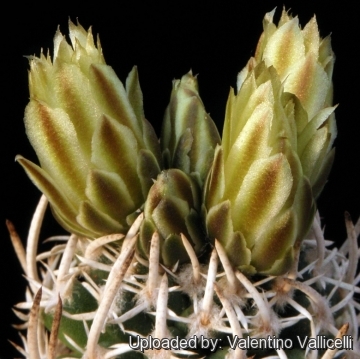 Pediocactus peeblesianus f. maius Photo by: Valentino Vallicelli
Pediocactus peeblesianus f. maius Photo by: Valentino Vallicelli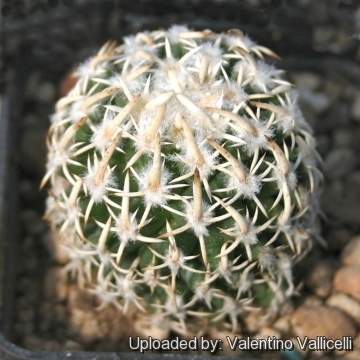 Pediocactus peeblesianus f. maius Photo by: Valentino Vallicelli
Pediocactus peeblesianus f. maius Photo by: Valentino Vallicelli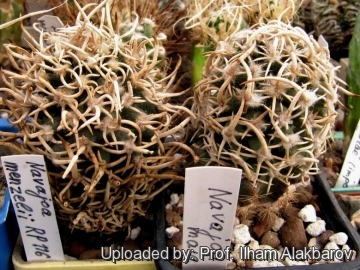 "menzelii" and "maia" Photo by: Prof. Ilham Alakbarov
"menzelii" and "maia" Photo by: Prof. Ilham Alakbarov Pediocactus peeblesianus f. maius Photo by: Prof. Ilham Alakbarov
Pediocactus peeblesianus f. maius Photo by: Prof. Ilham AlakbarovCultivation and Propagation: Pediocactus peeblesianusSN|11412]]SN|11412]] f. majus is a most beautiful cactus but rarely seen in cultivation. It is quite difficult to grow on its own roots. Very easily rot! It’s thought that’s better to watch this species in photo or in the natural habitat rather than to try to cultivate it. For this reasons the plant is often grafted on a frost hardy stock.
Soil: Use mineral well-permeable substratum with very little or no organic matter (peat, humus).
It needs perfect drainage to flourish.
Repotting: Repotting every 2-3 years. As it is especially prone to rot under-pot in a smaller container filled with very porous compost. Use pot with good drainage.
Exposition: This plant need full sun and above all a very good ventilation, especially in winter. Tends to bronze in strong light, which encourages flowering and heavy spine production.
Watering:It needs regular water in late winter, early spring (the short main growing season), and also in Autumn and keep totally dry during winter. In the rest period no high atmospheric humidity!!Care must be taken with watering as they tends to become swollen and untidy in growth habit if given too much water and shade.
Fertilization: During the growing season enrich the soil using a fertilizer rich in potassium and phosphorous, but poor in nitrogen, because this chemical element doesn’t help the development of succulent plants, making them too soft and full of water.
Hardines: It can tolerate temperature below zero (-15° C or less). Mature individuals - if the growing conditions are not optimal, easily rot and die.
Pests & diseases: It may be attractive to a variety of insects to watch for:
- Red spiders: Sensitive to red spider mite. Overhead watering is helpful in controlling mites.
- Mealy bugs: Occasionally mealy bugs they develop aerial into the new growth among the wool with disfiguring results, but the worst types develop underground on the roots and are invisible except by their effects.
- Rot: Rot it is the major threat . If the plants are not watered and “aired” correctly, fungicides won't help all that much.
Remarks: Displaying your cacti on shelves has the added benefit of keeping them off the ground and away from potential rodent or snail damage.
Propagation: Seed or grafting. Temperature for optimum germination: night minimum approx 17 day maximum to near 40 C at any time of year with proper temperatures and day-length (ca.13-14 hours); it is possible to extend day-length with artificial lights. Anyway the seeds germinate slowly with difficulty and a low rate of success (But germiation is comparatively easy if compared with other Pediocactus and Sclerocactus species and often new seedling cluster spontaneously around the plant every year), scarification and stratification help, alternate freeze and thaw both wet and dry, but don’t keep wet, alternate wet and dry with changing temperature. Germination can take several years so keep pot and try again next year. Seedlings do not do well either, and some die each year, for this reason plants are commonly grafted on hardy stocks like Opuntia humifusaSN|11629]]SN|11629]] in this case they are easy to grow and no special skill is required. This species is better and easier if grafted.
Your Photos
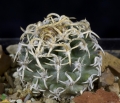
by Peiffer Clement















